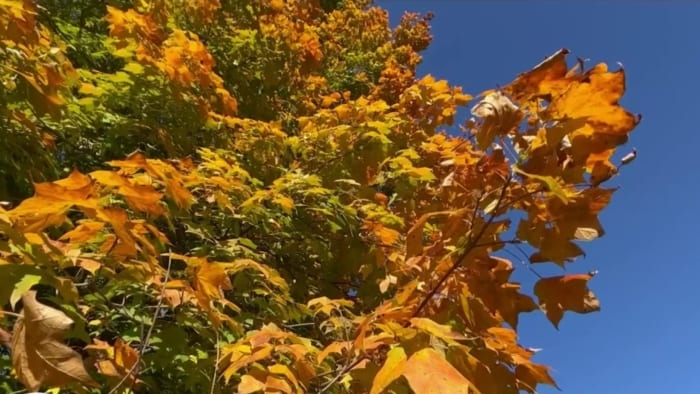If you’ve walked outside recently, you’ve probably noticed a beautiful color change. But why do the leaves change color? And are some spots better than others for finding color changes?
To find out, we visited the experts at Kensington Metropark in Milford, part of the Huron-Clinton Metroparks system. Kensington is a great place to see fall foliage, with rich foliage surrounding Lake Kent.
So why do the leaves change color? That’s because the trees are preparing for Michigan’s cold winter, said Victoria Taylor Sluder, district interpretive services supervisor for Western Metroparks.
When temperatures drop, trees are at risk of damage and frostbite, just like humans. To combat that, they reabsorb all the chlorophyll in the leaves. Chlorophyll not only allows trees to photosynthesize, but also gives the leaves their green color. When chlorophyll is reabsorbed, the remaining colors of the leaves are yellow and orange.
Now, you may be wondering if some of the leaves are deep red or purple, rather than orange or yellow. Its color is actually caused by pigments produced by the tree. The red color essentially acts as a sunscreen for the leaves, Sluder said. It also has the added benefit of attracting birds, allowing your plants to better disperse their seeds.
But if you’re a leaf collector, Sluder recommends leaving the dark red and purple leaves, which are most commonly found on poison ivy and sumac, alone. A good rule of thumb is if you don’t know the type of leaf, don’t pick it up.
If you’re looking for a good spot to view this beautiful fall scene, Sluder says you should look for a spot with plenty of sunlight. Sometimes you will see a tree that has changed color on one side but not on the other side, this is due to exposure to sunlight. Wide open areas and areas near water are great spots to view the colors.
As for when the color will be most prevalent, the answer is exactly “now.” It’s all speculation, but it’s somewhat predictable from what’s happening up north. Typically, in southern Michigan, he peaks two to three weeks after color change peaks in the north. This year it is expected to occur in the first two weeks of October.
In addition to seeing the fall foliage, you can also participate in a variety of fun fall events (click here for details) or go pumpkin picking in the farm center’s pumpkin patch. For even more fun, you can even take a hayride to the fields.
From basking in the fall foliage to seeing animals to fun activities planned, there’s plenty to do at Metropark.
Click or tap here to learn more about Huron-Clinton Metroparks and find a park near you.
